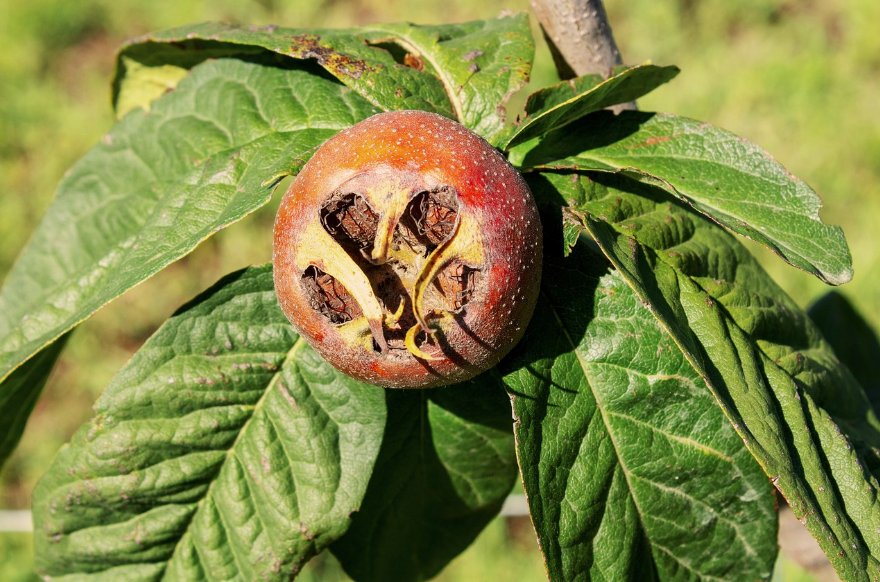But there's also reasons to be happy! Today the first rose of the year opened in the sunny, sheltered front garden. It's a Darcey Bussell, a variety bred by David Austin, with crimson flowers. I have a lot of Austin roses, or "English" roses as he modestly called them, mostly because they cope better with a no spray regime than many, often have good scent, and I like the very classic old rose form.
Another reason to be happy is the medlars in full bloom, and it's looking like it'll be a good year for medlars, which can be a bit temperamental. I'm not sure if people here know what a (European) medlar is, since they're not a common fruit nowadays and at best grown by a few gardeners as ornamentals. The medlar is a member of the pome (apple, pear, quince) family of fruits, which produces small, hard, brown fruit. It was commonly grown in Shakespeare's day, and also the butt of many jokes because of its shape and how it's eaten. It has a puckered dent in it that is very ... suggestive, giving rise to nicknames like "open arse fruit", and it's not edible until it's incredibly ripe. People say you have to eat it "rotten", but this isn't true, you just eat it when it's over-ripe, a bit like a squishy apple or pear. But the taste.... it's like apple puree with a hint of cinnamon and lemon juice. I love them so much I planted two trees.
Here's what the open arse fruit looks like in the autumn:

EDIT: I call it the European medlar to differentiate it from the the loquat, which people sometimes also call medlar, but actually its origin is Middle Eastern. It's been cultivated in Europe as well since the ancient Greeks and Romans though.
